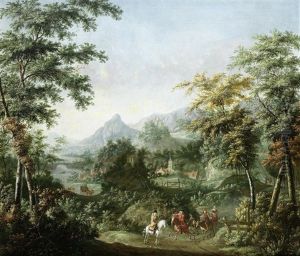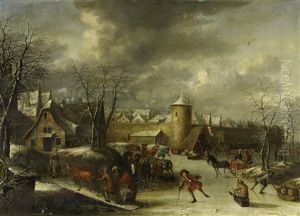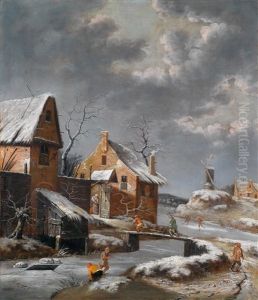Johannes Maes Paintings
Johannes Maes, also known as Nicolaes Maes, was a Dutch painter who lived during the 17th century. Born on January 1634 in Dordrecht, Holland, he was one of the pupils of Rembrandt van Rijn, one of the most renowned Dutch artists of all time. Maes is particularly known for his genre works, portraits, and historical allegories, and he is considered one of the Dutch Golden Age's most accomplished painters.
Maes began his artistic training with a local master in Dordrecht before moving to Amsterdam to study under Rembrandt around 1650. During his time in Rembrandt's studio, he absorbed the master's approach to color, lighting, and narrative, which would greatly influence his own style. After several years, Maes returned to Dordrecht and began his professional career. His early works often reflected the strong chiaroscuro and psychological depth characteristic of Rembrandt's influence.
As his style evolved, Maes developed a smoother technique and shifted towards genre scenes, depicting everyday life with an insightful eye and often a moralizing theme. His domestic scenes, such as 'The Idle Servant' and 'The Virtuous Woman', are particularly noted for their intimate portrayal of Dutch interior life and the subtle interplay of light and shadow. These works often featured women engaged in household tasks, captured in moments of quiet contemplation or moral instruction, and are considered some of his finest contributions to Dutch genre painting.
In the latter part of his career, Maes moved to Antwerp and focused primarily on portraiture. His portraits were highly sought after for their elegance and refinement, and he became one of the leading portraitists in Antwerp. Unlike his earlier works, these later paintings exhibited a more baroque influence, with an emphasis on rich color, elaborate costumes, and grandeur. Despite this stylistic shift, Maes's portraits retained a certain psychological depth that harkened back to his Rembrandtesque roots.
Nicolaes Maes's work was widely recognized during his lifetime, and he enjoyed considerable success. His paintings are now held in major museums around the world, including the Rijksmuseum in Amsterdam, the National Gallery in London, and the Metropolitan Museum of Art in New York. Maes's contribution to Dutch art has been celebrated for its versatility, emotional resonance, and the skillful depiction of light, earning him a prominent place among the old masters of the Dutch Golden Age. He died in December 1693 in Amsterdam.



